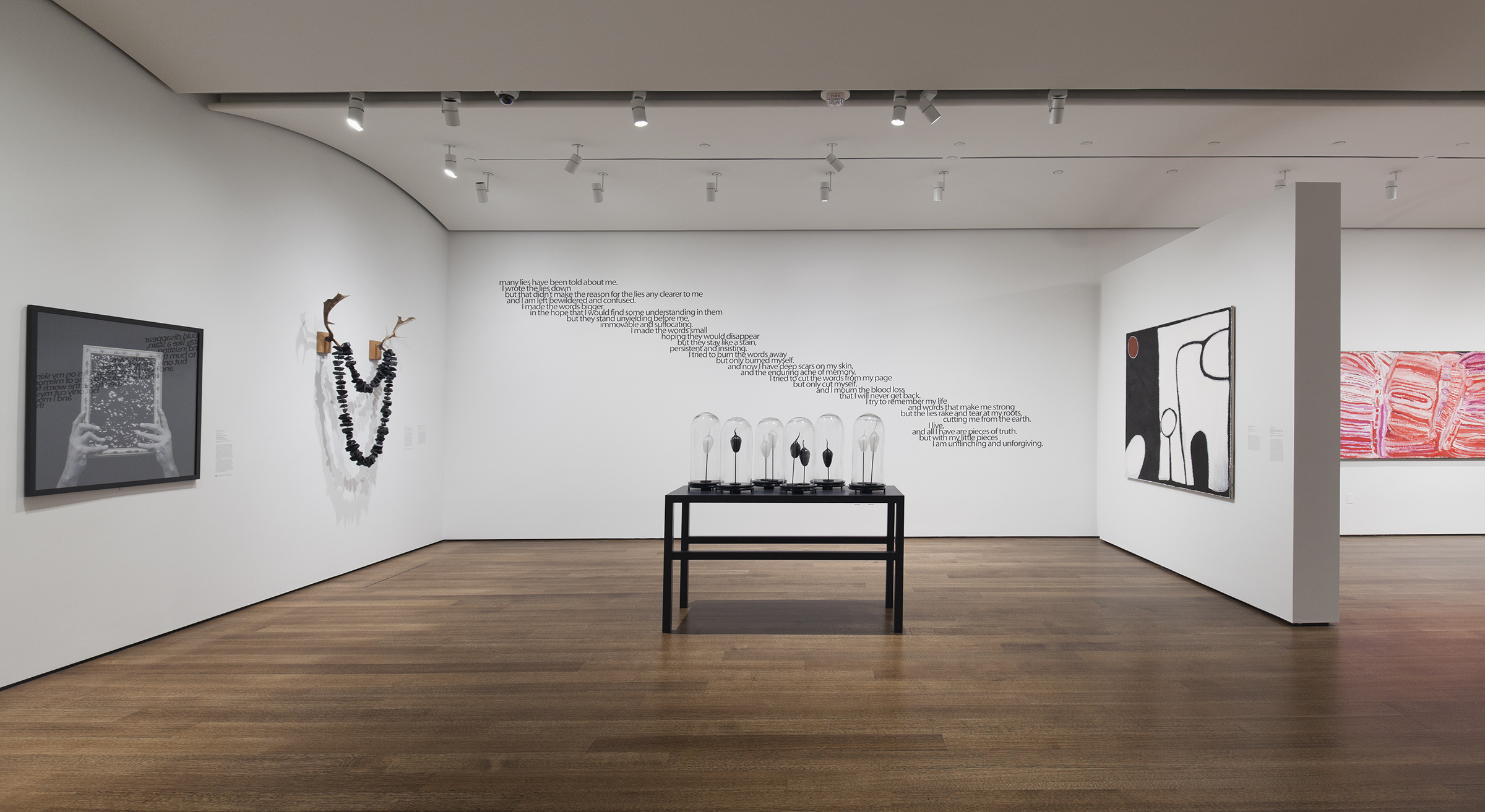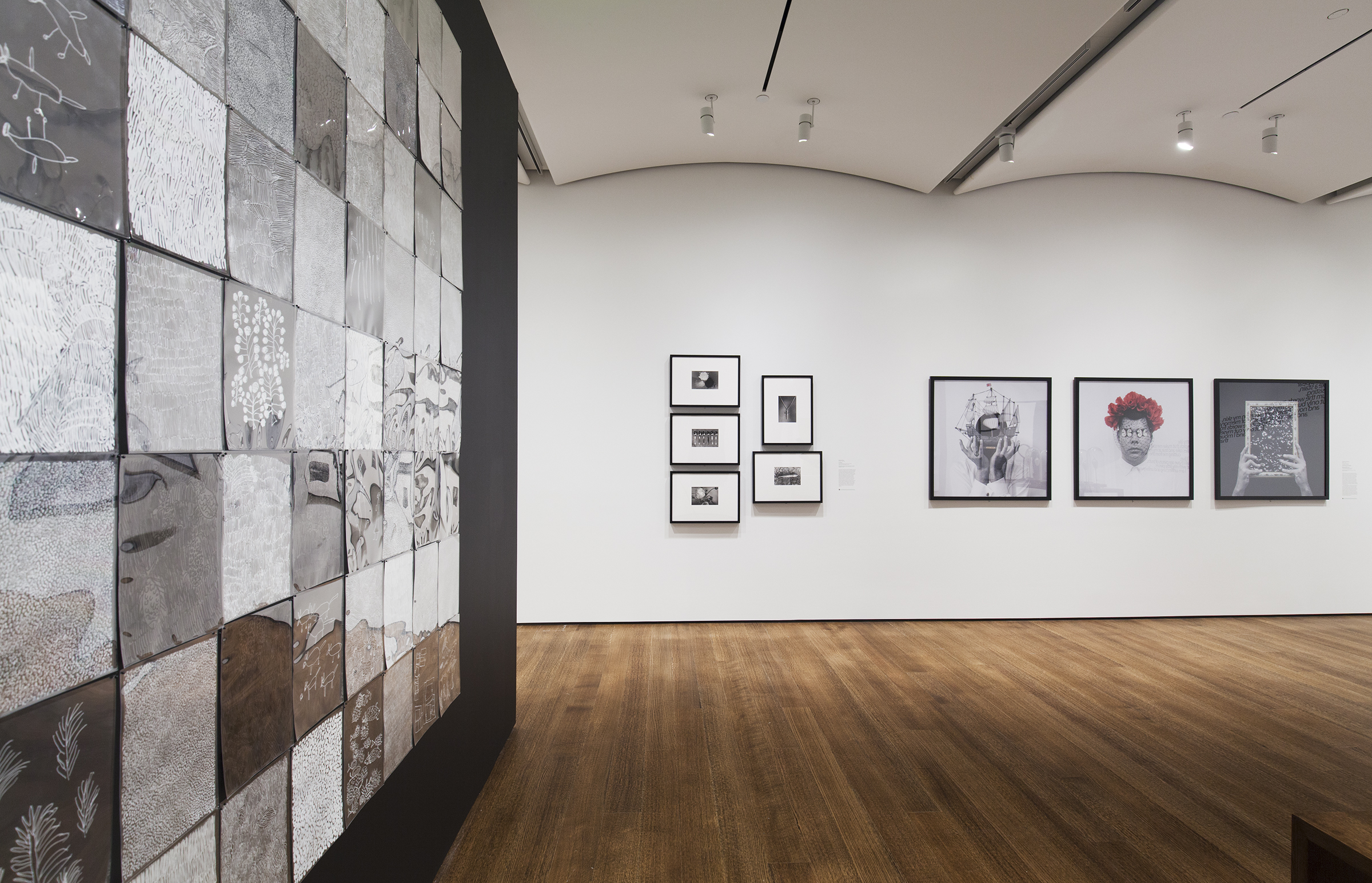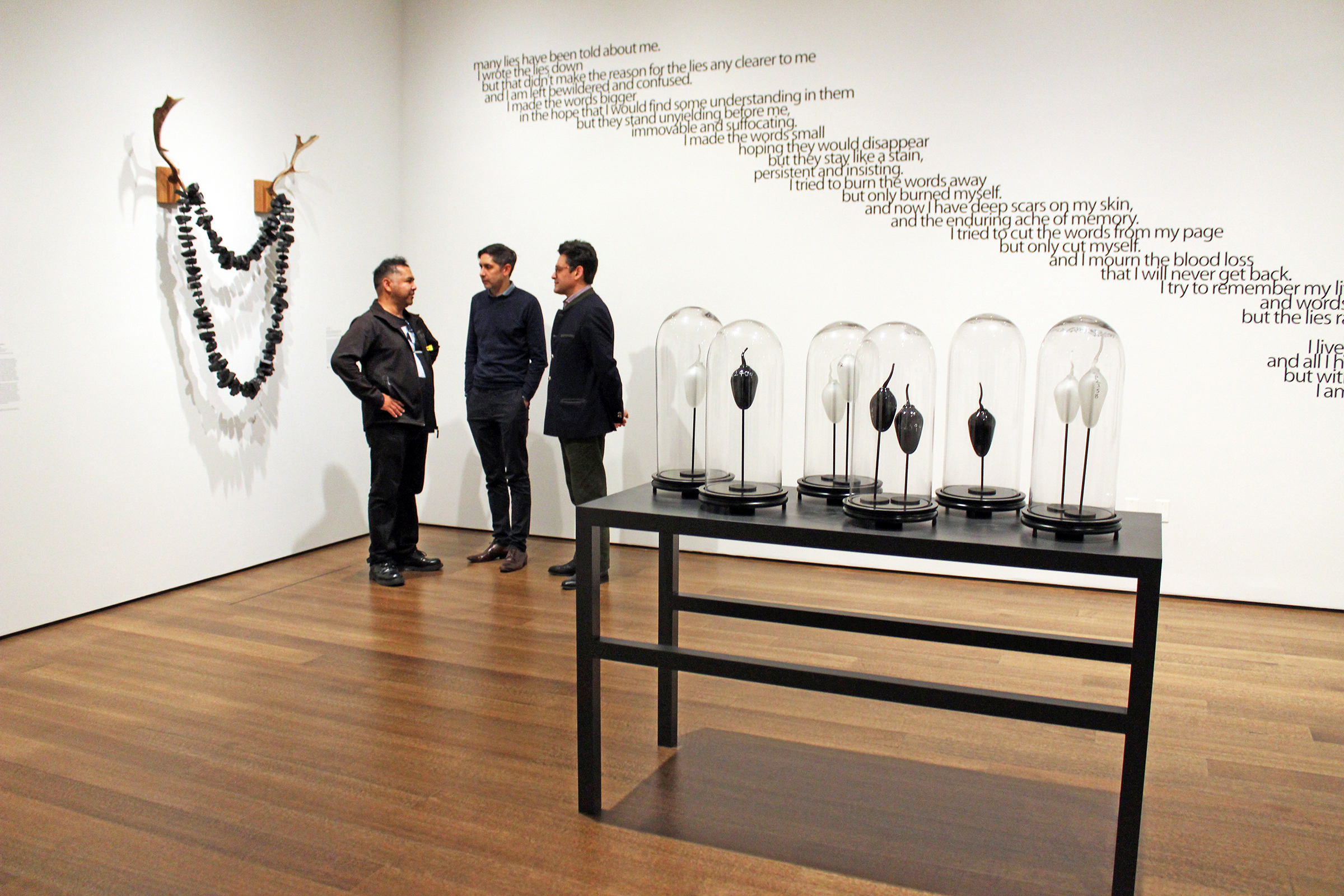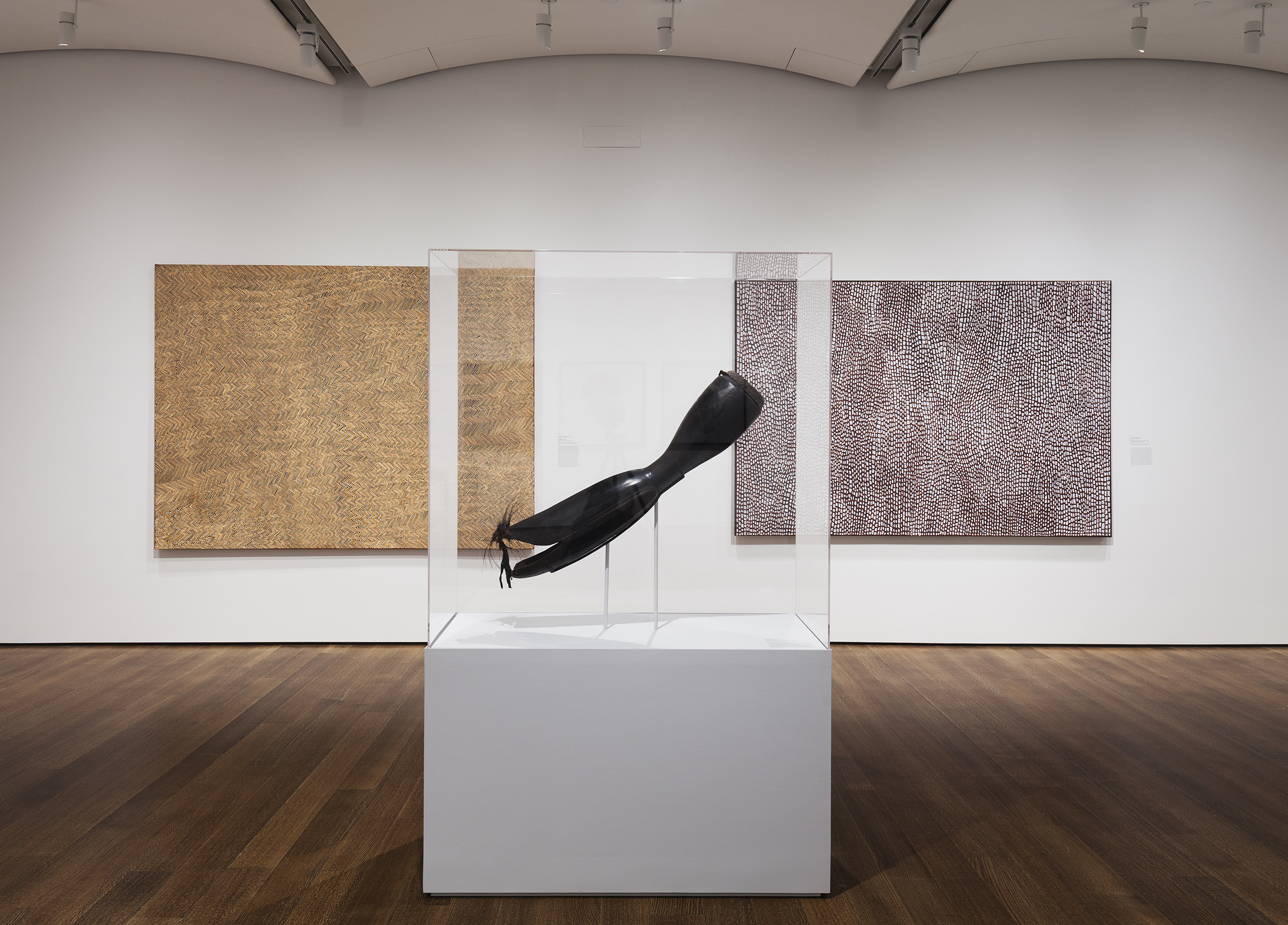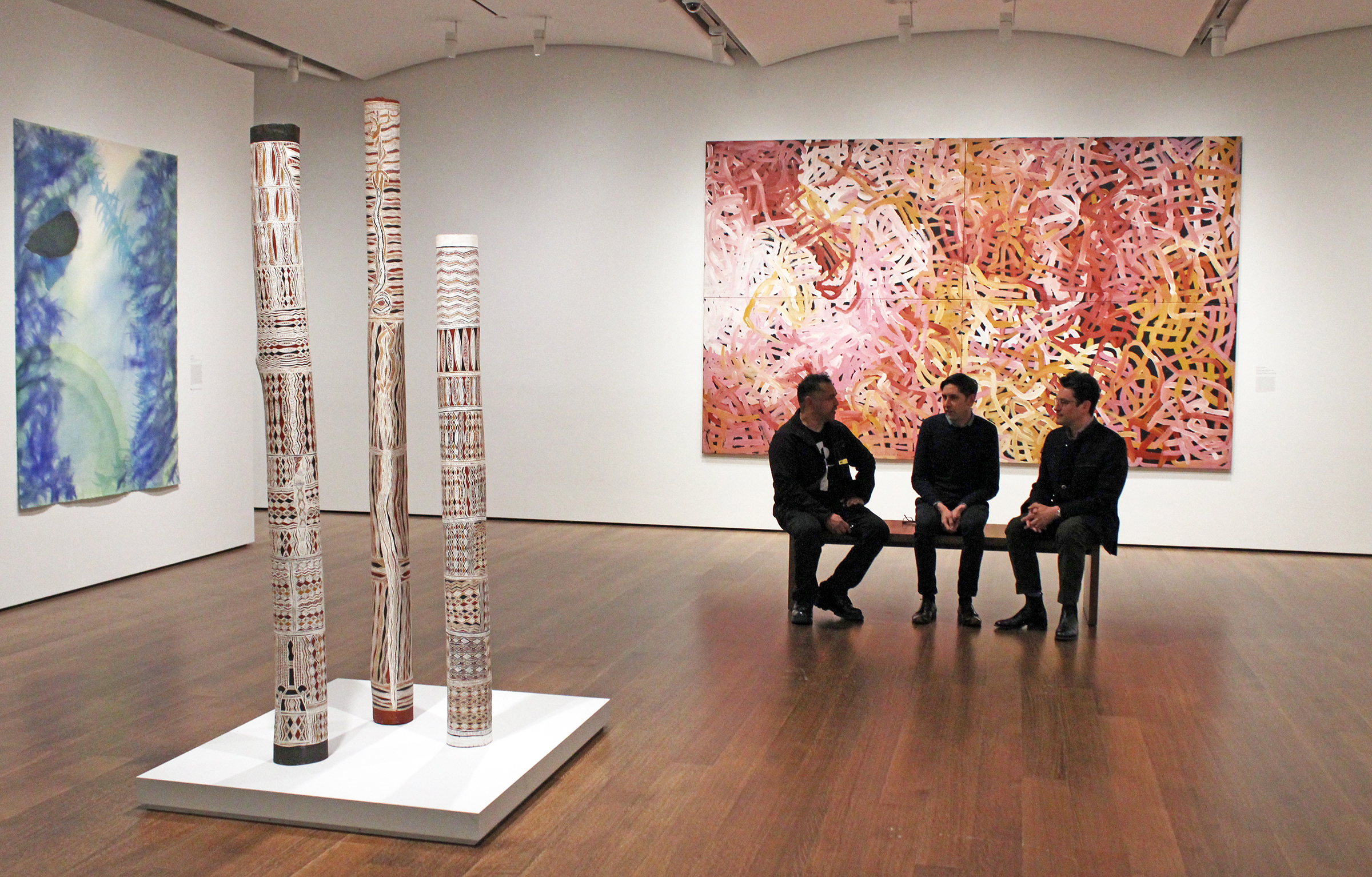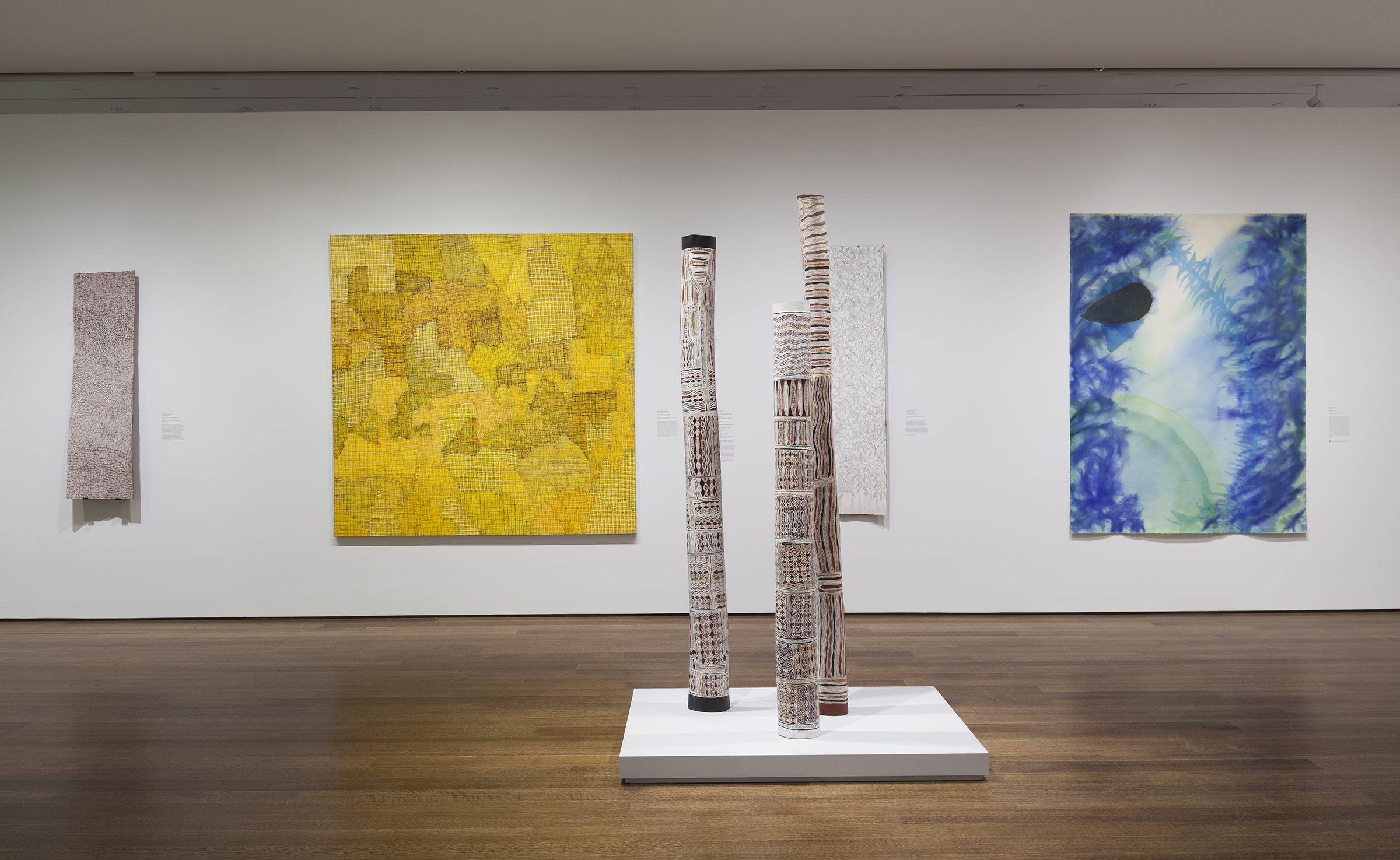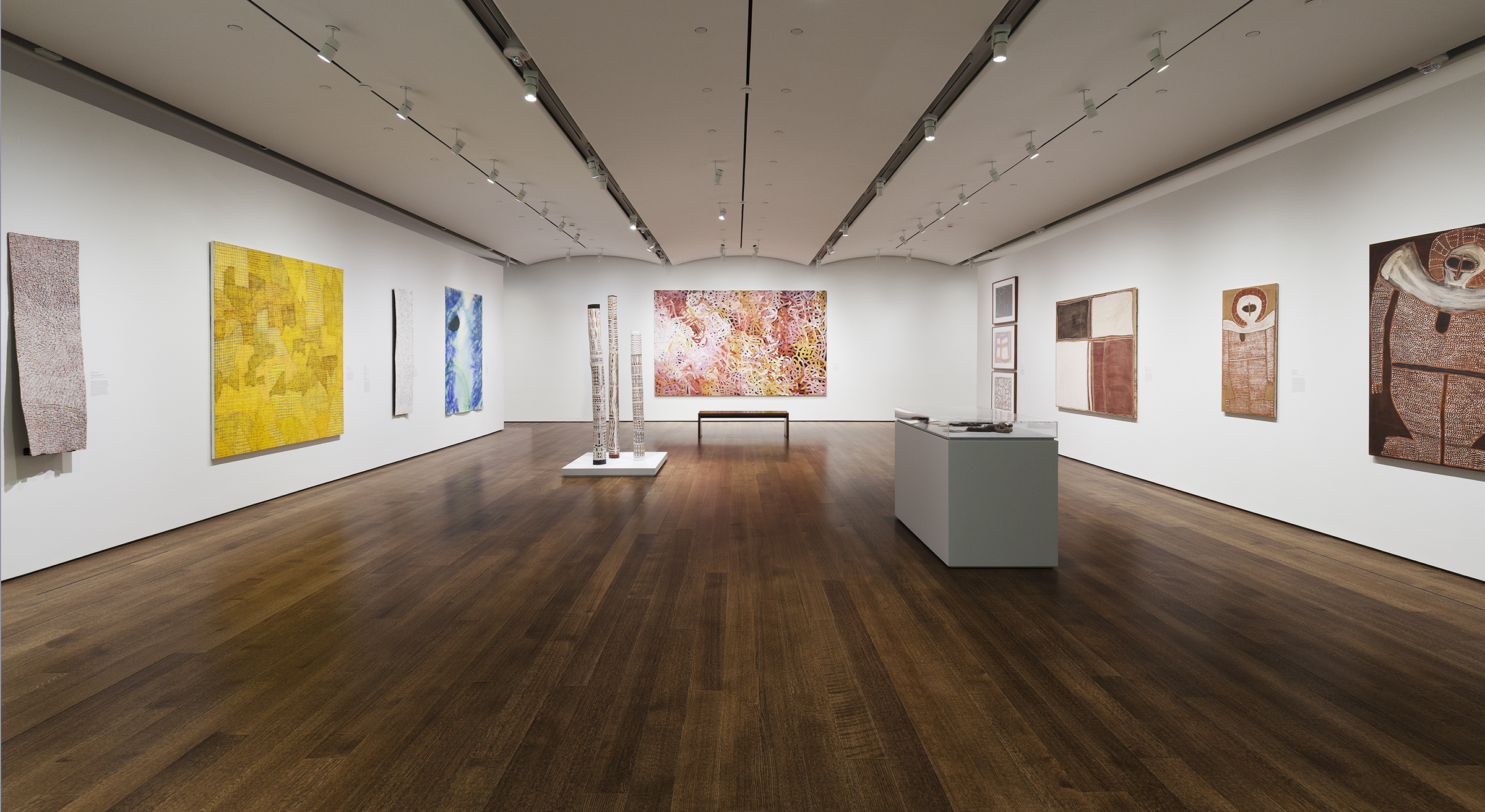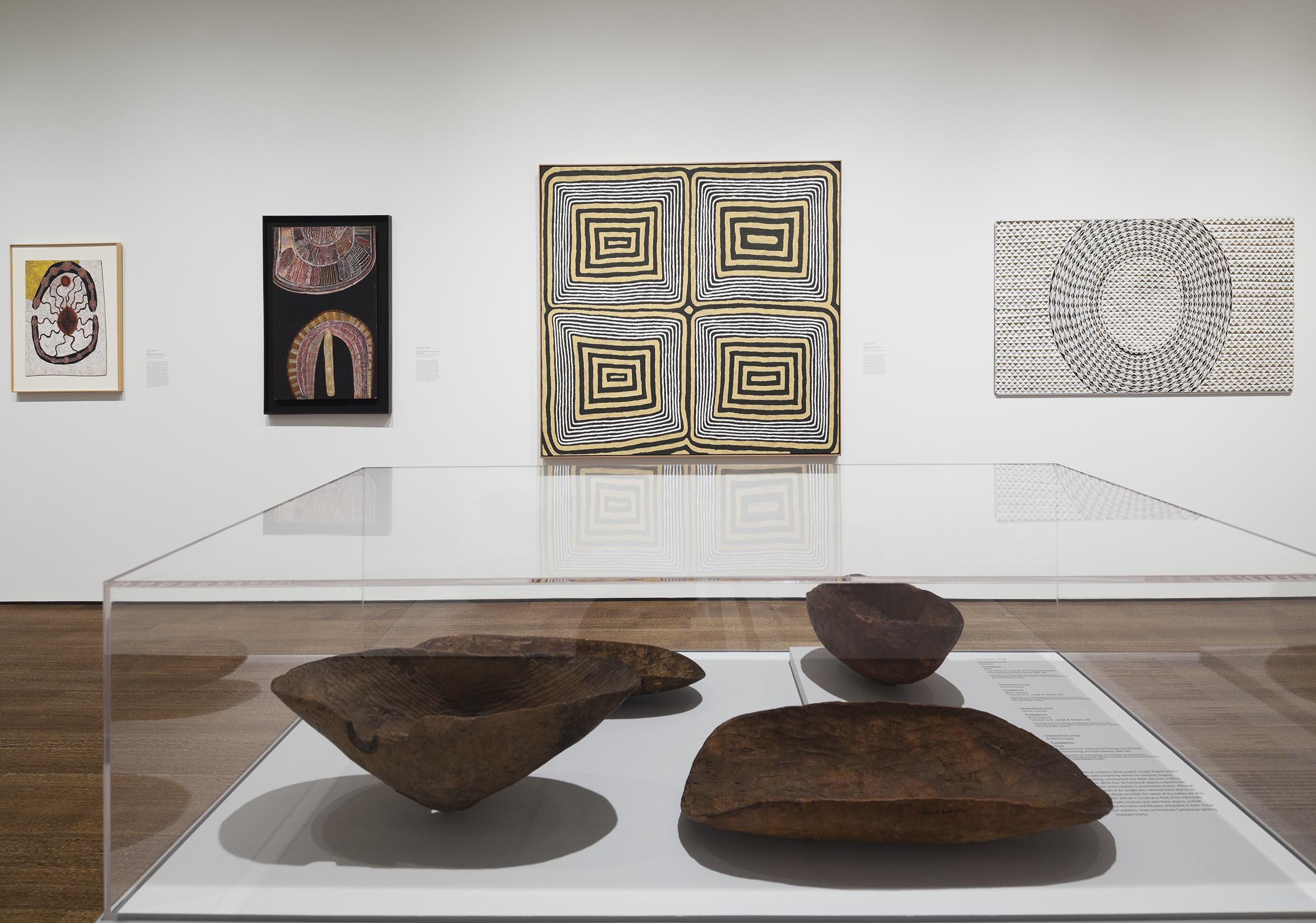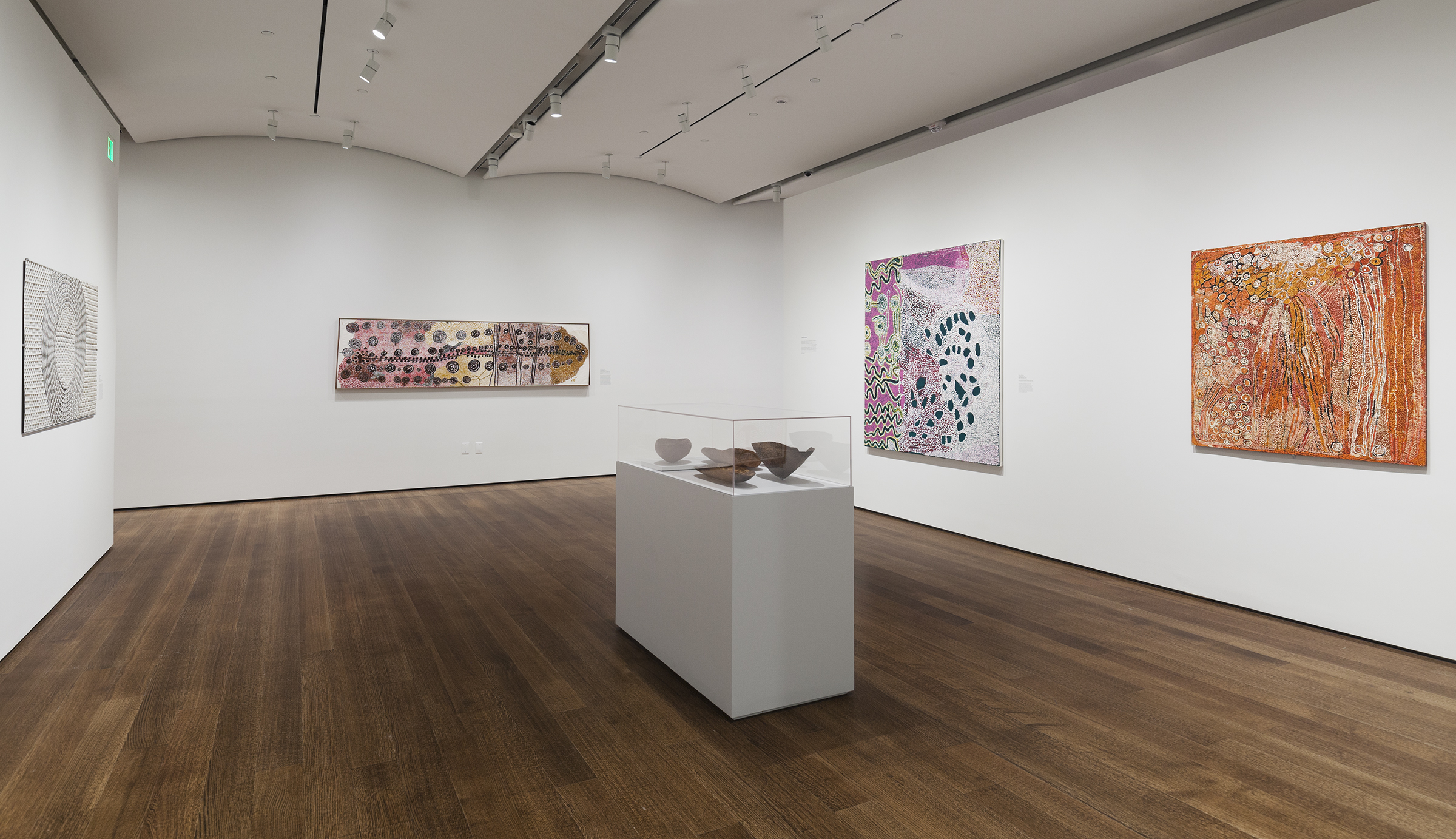Stephen Gilchrist, the Australian Studies Visiting Curator at the Harvard Art Museums, spent the last five years thinking about, planning, and organizing Everywhen: The Eternal Present in Indigenous Art from Australia. A member of the Yamatji people of the Inggarda language group of Western Australia and an associate lecturer in art history at the University of Sydney, Gilchrist shared his thoughts about visitors’ perceptions of Everywhen, the significance of contemporary Indigenous Australian art being on view at Harvard, and his pride in his heritage.
What do you think surprises people about the exhibition?
I think people are surprised by the diversity—that there’s more to Indigenous art than just dots and bark painting. There’s a great range of works on paper, canvas, acetate, and glass; there’s photography, cultural objects, and installations. I hope that people are struck by the beauty that will then compel them to pose deeper questions about the works and their relationship to them. I think people are interested in the fusion of the conceptual and the perceptual that seems to appear in many of the works in the show. Quite a few people have also commented on the gender equity of the show.
What should visitors take away from the exhibition?
I want people to understand the breadth, sophistication, beauty, and politics of this art form. I think the provocation of the exhibition is really to imagine the world otherwise. There are multiple and multiplying ways of being, seeing, and knowing the world and many of the narratives that we have inherited from art and social history are at the very least incomplete. The exhibition is about time, but it is equally about power and who gets to claim it. It would be great if visitors could spend time with these unfamiliar ideas that can potentially recalibrate their understanding of Indigeneity. Indigenous people are not merely from and of the past. We are couriers and keepers of what has been, what is, and what could be. I also really hope that people see the exhibition as not art of the other but simply as a significant form of contemporary art. It deserves our attention and deserves to be seen here at the Harvard Art Museums alongside some of the great art traditions of the world.

